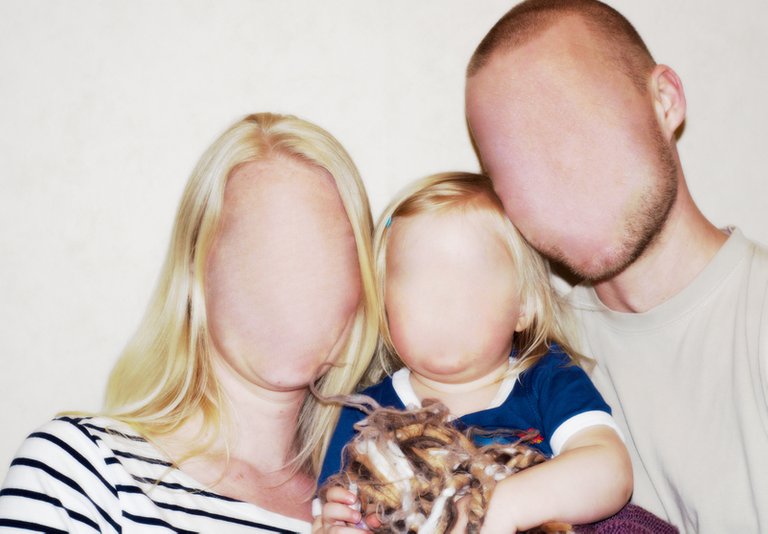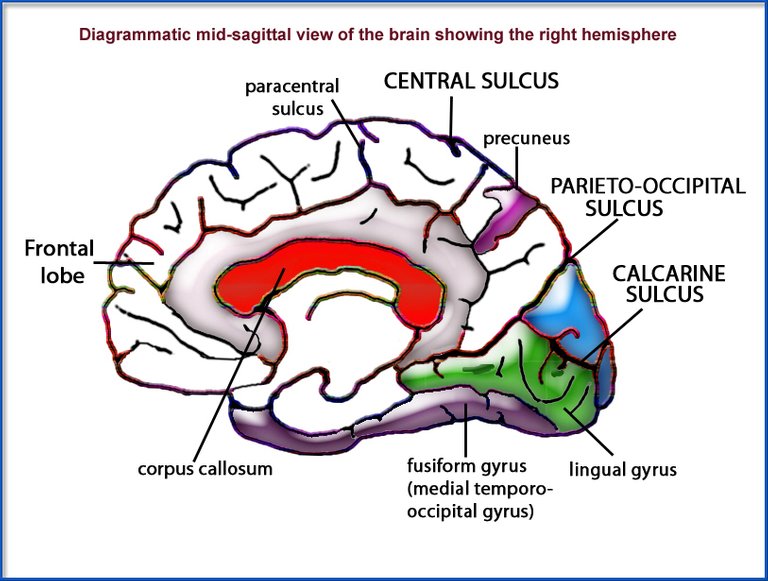Imagine walking down the walkway on a cool breezy evening, apparently coming back from work place, and you are being approached by a little girl not more than 9 or 10 years old laughing and running towards you and you can’t just recognize her as someone you know. You bent yourself, anyway, to embrace the beautiful cheering little kid and as you were just lifting yourself up to continue on your lonely walk, the kid held on to your hand and said words like, “Daddy, let me help you with your bag.” Imagine yourself recognizing the voice but not the face. Well, imagine this.
Or lets look at another scenario.
You are at a coffee shop. You are having some nice time with an old copy of Moby Dick you just picked up at the old book store around the corner and a young man, in his mid-twenties, comes up and says hello and you both began some nice interesting conversation, and he seemed nice and pleasant enough but you find yourself trying to bring an end to the conversation because you don’t really know who the hell he is. You do know him somehow (because you are talking to your colleague at work) and he’s obviously acquainted with you too but some parts of your brain cannot really recognize the chap. Imagine this too.
Okay, lets look at another scenario.
You walked pass a mirror and you briefly saw your reflection in it. You recognize it as yourself just because you can see it wearing the same cloth as you but you could not just say whose face sits on yours. I mean, you could have found it hard to describe the face if you hadn’t seen it reflected in that mirror. And as true as this is, once you turn away from the mirror and the face is out of sight, it is literally out of your mind too. Imagine this too.
As scary and creepy as those scenarios may be, over two percent of the global population experience them. They do so because they are actually suffering from Prosopagnosia, also known as Face Blindness.

Prosopagnosia, Face Blindness Under the Creative Commons Attribution-Share Alike 3.0 Unported
So what exactly is Prosopagnosia?
Prosopagnosia is a cognitive disorder characterized by the severe incapacity to recognize familiar people simply from their faces, including one’s own face. Mostly, other visual processing and intellectual function of the individual remain intact, although Prosopagnosia may also effect the difficulty in identifying animals, discerning objects or even navigation. Recognition of expressions and identification of age and gender may even be affected by the disorder.
While most people with Prosopagnosia employ tactics and techniques to balance the presence of this disorder in them. The tactics are often referred to as “piecemeal” or “feature-by-feature” tactics. This include making use of less sensitive objects such as the hair style or color, the clothing type, people’s physique and voices to recognize them. Others don’t find it easy coping with Prosopagnosia as it effects negative impacts on their everyday living. They mostly avoid social interactions and even experience difficulties in their relationships and even their careers. On the long run, they are reported to experience social anxiety disorder which is characterized by dread and phobia of social encounters.
Causes of Prosopagnosia

Wikimedia Creative Commons: Image showing the right hemisphere of the brainUnder GNU Free Documentation License, .
Face blindness is typically associated with autism spectrum disorder, as people with autism spectrum disorder mostly have difficulties in recognizing faces. Prosopagnosia is also linked to disorders such as Williams' syndrome and Turner's syndrome.
Types of Prosopagnosia
Acquired Prosopagnosia
Acquired Prosopagnosia are thought to be caused by damages to the right occipital temporal regions of the brain. This type of Prosopagnosia is typically of two types, Apperceptive and Associative Prosopagnosia. People with apperceptive prosopagnosia usually find it hard to judge the difference between faces, both familiar and unfamiliar, and they struggle as well to perceive facial emotions. While associative Prosopagnosia is such that the victims can tell the differences between two or more faces even though they may find it hard to provide personal information about the owners of the faces, even of their own spouses.
Developmental or Congenital Prosopagnosia
This is a type of face blindness that cannot be associated with any brain damage. It becomes noticeable during early childhood and exhibit itself for as long as the victim lives. It is suggested that genetic factors could be responsible for this type of Prosopagnosia and it is said to e hereditary if this type of Prosopagnosia manifests itself in more than one family member.
Diagnosising Prosopagnosia

Wikimedia Creative Commons: Stephen Gary Wozniak, American inventor, Programmer and co-founder of Apple Computer, Inc. Wozniak suffers prosopagnosia, or face-blindness. Under Creative Commons Attribution-Share Alike 3.0 .
The first of the test is the famous face test where the patient is demanded to recognize faces of people. This could have been a good starting point but it was discovered that people suffering from associative prosopagnosia could recognize the familiar faces. Although the famous face test could work well with people with other types of prosopagnosia especially those suffering from apperceptive prosopagnosia as these are mostly unable to recognize either familiar or unfamiliar faces.
Other Tests
1. Benton Facial Recognition Test (BFRT)
This is one of the test used by neuropsychologists to assess patients. A target face is presented to the patient along with six other test faces which are cropped to remove their hair and clothes so as to prevent people possibly living with prosopagnosia to identify the target face from the test faces using the hair or clothing. A mixture of both male and female faces is used in this test. The test is conducted in two or more sessions depending on the severity of the disorder in the patient (if present). In the first session, only one image of the target face is inserted with the test faces while the subsequent session has more than one image, mostly two to three; with each image have different poses. However, its reliability was put under questioning when in this paper (Click here to read the paper), Duchaine and Nakayama who both conducted a study with Benton Facial Recognition Test proved that
and thus, recommended that
2. Cambridge Face Memory Test (CFMT)
As a result of the deficiency discovered in Benton Facial Recognition Test, Duchaine and Nakayama, developed another test to help diagnose people possibly living with prosopagnosia. However, like the Benton Facial Recognition Test, its reliability was eventually faulted.
Here is how it works: The patient is provided is firstly provided with three images each of six different target faces. He/She is then provided with an image consisting of a target face and two test faces which were not amongst the target faces presented to the patient earlier.
Duchaine and Nakayama though were able to prove the efficiency of the test and its benefit over Benton Facial Recognition Test (read here) however, like Benton Facial Recognition Test, the images of the target faces which were unfamiliar faces to the patients were only seen briefly by the patients at the start of the test thus there is high tendency for anyone to mix the faces up during the test. This, there seem to be further need for supplement testing.
You can take a sample of the test online. CLICK HERE
3. 20-item Prosopagnosia Index (PI20).
This self-report questionnaire used to assess the presence of prosopagnosic traits in an individual. The questionnaire consist of 20 statements which helps individuals describe their face recognition experiences. The questionnaires can thus be used with a computer-based face recognition tests for the diagnosis. The test, however, only fits as a supplementary diagnostic instrument as the test’s unreliability is often associated with the weak correlations between individual’s self-rated face recognition ability and their actual performance.
You can also take the online test here CLICK HERE
Treatment
Sadly, there are presently no treatment for Prosopagnosia. The disorder can only be managed using the tactics or strategies already mentioned in the introduction section, and therapeutic sessions should e sort if depression is observed in the patient.
In Conclusion
From our discussion so far, we recognize Prosopagnosia, also known as face blindness, as the inability of a person to recognize faces, even his/her own. However, Prosopagnosia does not affect the decision making ability of the patient, neither does it have effect on their visual procession ability. Although, Prosopagnosia is thought to be as a result of damage or impairment to the right fusiform gyrus of the brain, and may sometimes run in the family (genetic). The sufferer uses tactics to identify people – tactics such as using the hair colour/style, physique, the voice or clothes worn to identify people. Face Blindness can make the patient socially withdrawn, and can even negatively affect his relation and career. The face blindness may not be quickly diagnosed nor perceived in the patients since the diagnosing methods currently employed are unreliable. And lastly… and sadly, the disorder presently has no treatment.
Haven seen all these, I will suggest that we partake in the tests whose links I have provided us with in the article.
Thank you very much for reading through, and thank you for visiting.

References
Prosopagnosia Research
National Institute of Neurological Disorders and Strokes
Medicine Net
Royal Society Publishing
Trouble With Faces
Psychology Today
Wikipedia
Huffington Post
Face Blind
Only My Health

If you write STEM (Science, Technology, Engineering, and Mathematics) related posts, consider joining #steemSTEM on steemit chat or discord here. If you are from Nigeria, you may want to include the #stemng tag in your post. You can visit this blog by @stemng for more details.

Hello! I find your post valuable for the wafrica community! Thanks for the great post! @wafrica is now following you! ALWAYs follow @wafrica and use the wafrica tag!
Interesting read. Never heard of this disorder.
Like seriously...i have not heard of it either, but the disorder is really strange somehow
This is great @abumaryam. I just might be suffering from associative prosopagnosia and I never knew it. This is super educative. Nicely pit together
Awesome content... I get to add one more knowledge to my library
Awesome content... I
Get to add one more knowledge
To my library
- humbledeen
I'm a bot. I detect haiku.
While cute, this @haikubot comment is considered to be spam, harms the blockchain, and is the reason why we will soon have to pay for comments like this with Resource Credits. The servers that maintain the blockchain are extremely expensive because of comments like this seeking low effort upvotes, so please do not reward this behavior.
Please consider using this link to give a small downvote of 15% or so to discourage these comments.
Any bot like this should respect the community by providing a whitelist to prevent the post in the first place and then provide a way to delete the comment for those who find this intrusive.
I love this article. Funny enough, I'm just hearing about the face blindness but I have a question, can Prosopagnosia be hereditary?
Fantastic Work @abumaryam. I have an autistic cousin who forget faces on and off. I guess she has a form of Prosopagnosia.
This is huge,Took a while to digest. Never heard about it before, and funny enough ive not come across someone who has such at all.